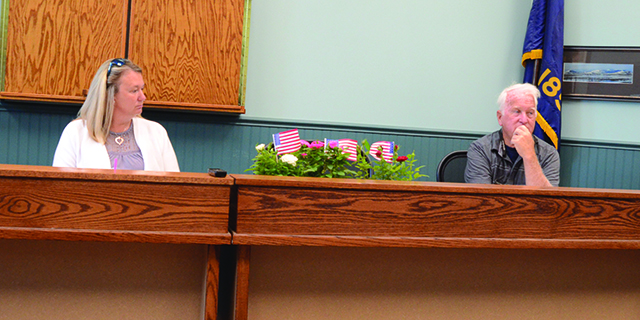Full text, Gov. Brown’s letter
Published 4:08 pm Monday, February 17, 2020

- State of Oregon seal
Dear Governor Inslee:
I am writing to thank you for your leadership and initiative to restore health to our iconic orcas, and to share with you my perspective on long-term and interim steps necessary to support that effort. The imperilment of southern resident killer whales is a tragedy shared by all of us in the Pacific Northwest, and Oregon stands with you to boldly address those factors contributing to their demise.
Trending
Among the three primary threats (i.e., toxins, noise and lack of food), Oregon’s primary opportunity is to enhance the availability of salmon to foraging orcas. The recent draft report from your task force Lower Snake River Dams Engagement Report provides a good context for sharing my perspective on long-term and interim steps to enhance the availability of salmon to foraging orcas. Importantly, this can be done while preserving the foundation of the low cost, carbon-free hydropower system that has helped fuel Oregon’s economy for the last century, and will help us to integrate more wind and solar to achieve our long-term climate goals.
As you know, Oregon is actively engaged in a long-standing effort to recover salmon and steelhead in the Columbia Basin as a vital part of our ecological, cultural and economic heritage and prosperity. The science is clear that removing the earthen portions of the four Lower Snake River dams is the most certain and robust solution to Snake River salmon and steelhead recovery. No other action has the potential to improve overall survival two-to three-fold and simultaneously address both the orca and salmon recovery dilemma while providing certainty in the legal challenge that has complicated operations for decades. This option would likely provide a dramatic increase in salmon available for orca forage, particularly during the late winter when vulnerable gestating orcas may be foraging off the mouth of the Columbia River. This option reduces direct and delayed mortality of wild and hatchery salmon associated with dam and reservoir passage and provides the most resilience to climate change (e.g., reduced thermal loading in the lower Snake and Columbia rivers and better access to and from the alpine headwaters most resilient to shrinking snowpacks).
I believe restoring the Lower Snake River must be a key presumption of our long-term solution for salmon and orca recovery, but much must be done before this is accomplished in order to help minimize and mitigate for potential harm to other vital sectors. Among other considerations, this includes an affordable, nimble and reliable power system that can help us to integrate renewables to meet our climate goals; continued water supplies for agriculture and municipalities; and efficient and affordable ways to get commodities to market. As identified in your draft report, collaborative, solution-based discussions among stakeholders are needed to facilitate these transitions. Oregon stands ready to be an effective leader and partner in these efforts.
In the interim, I believe there are two important actions that we can take together to address immediate needs of orcas and salmon. First, the Flexible Spill and Power Agreement that we both signed can provide the foundation for an effective bridge to a long-term solution for salmon that also preserves the hydropower system as an important tool in meeting our carbon objectives.
Hopefully we can work together to improve on that agreement, which will enhance survival of juvenile wild and hatchery salmon which translate into additional orca forage only two years later. Second, Oregon has capacity to increase interim hatchery production of salmon important for orca forage. This increased production must be focused in areas with low ecological risk to existing wild salmon populations, such as lower Columbia River off-channel areas and other areas outside the range of historical natural production areas. In recognition of this urgent need for orca forage, Oregon already has fish in the queue that could be available to orcas as soon as 2021. I would like to partner with you to help ensure this initiative is fully funded and sustainable during the necessary interim period while long-term solutions are addressed.
Thank you again for your leadership on orca recovery and for facilitating the thoughtful collaborations that will help secure solutions.
Trending
Sincerely,
Governor Kate Brown








